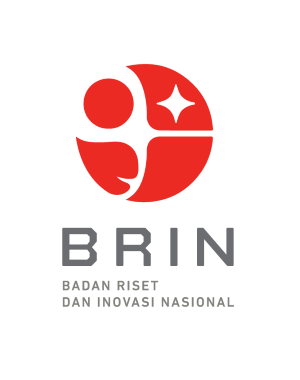PENGGUNAAN TEPUNG IKAN SAPU-SAPU (Pterygoplichthys pardalis) SEBAGAI SUMBER PROTEIN PAKAN PADA PENTOKOLAN UDANG VANAME (Litopenaeus vannamei)
DOI:
https://doi.org/10.33096/joint-fish.v5i2.144Keywords:
P. pardalis meal, vaname shrimp, feed, treatment, growthAbstract
Vannamei shrimp (Litopenaeus vannamei) is a fishery product that is able to generate foreign exchange for the country besides tiger prawns. This shrimp has the advantage of being more resistant to environmental conditions and disease. Feed plays an important role in its cultivation because it absorbs the largest cost of 60-70% of the total production cost. At present, there are still many farmers, both traditional and modern, who have not carried out effective feeding because of the high cost of providing feed. Amazon sailfin catfish, Pterygoplichthys pardalis are invasive fish in waters that need to be limited in population development by using them. One form of utilization is to make it a fish meal product and then it becomes a raw material for feed. This study aims to analyze the use of P. pardalis meal as feed for vaname shrimp. The test animals were vaname shrimp with a weight of 3.35±0.5 g; total length 6±0.5 cm, first acclimatized for 5 days. The percentages of using broomstick fish meal were 25%, 30%, 35% as treatment and commercial feed as control feed. The study used a completely randomized design (CRD) with 4 treatments and 3 replications. Research for 60 days, the dose of feed given is 5% with a frequency of 5 times a day. The parameters observed were: absolute growth (PM), daily growth (PH), daily growth rate (LPH), feed conversion (KP), feed efficiency (EF) and survival (KH). Data were analyzed for variance (ANOVA). The results showed that the higher the percentage of P. pardalis meal, the better the response of vannamei shrimp to growth parameters, but based on the analysis of variance, it showed that the treatment not significant all the parameters observed.
References
Anonim. 2021. Budidaya Udang Vaname (Litopenaeus vannamei) di Tambak Milenial. Millenial Shrimp Farming (MSF). Kementerian Kelautan Dan Perikanan Direktorat Jenderal Perikanan Budidaya Balai Perikanan Budidaya Air Payau Situbondo. 40 hlm.
Andriani Y. and Rosita R. 2021. Evaluasi penggunaan tepung ikan sapu-sapu dalam pakan buatan terhadap performa ikan patin (Pangasius sp). Journal of Fish Nutrition, 1(1): 20-29.
Aziz A. F., Nematollahi, A., Siavash, & Saei-Dehkordi, S. 2013. Proximate composition and fatty acid profile of edible tissues of Capoeta damascina (Valenciennes, 1842) reared in freshwater and brackish water. Journal of Food Composition and Analysis, 32: 150-154.
Bagenal, I.B. 1978. Aspect of Fecundity in: Ecology of Freshwater Fish Production. Blacwell Scientific Publication. Oxford.
Bell, M.V., Dick, J.R., Anderson, T.R. & Pond, D.W., 2007. Application of liposome and stable isotope tracer techniques to study polyunsaturated fatty acid biosynthesis in marine zooplankton. Journal of Plankton Research, 29: 417-422.
Cano-Salgado MP., Alvarez-Gonzalez CA., Martinez-Garcia R., Pena-Marin ES., Rodriguez-Estrada U., Macias EB., Civera-Cerecedo R., Goytortua-Bores E. 2022. Pterygoplichthys spp. (Siluriformes: Loricariidae) meal is suitable for the culture of Nile tilapia Oreochromis niloticus (Cichlidae) juveniles. Ciencia Rural, 52(1): 1-9.
Cuzon, G., Lawrence, A., Gaxiola, G., Rosas, C., & Guillaume, J. 2004. Nutrition of Litopenaeus vannamei reared in tanks or in ponds. Aquaculture, 235:513–551.
Hasnidar, Tamsil A, Akram AM, Hidayat T. 2021. Analisis kimia ikan sapu-sapu (Pterygoplichthys pardalis Castelnau 1855) dari Danau Tempe. Jurnal Pengolahan Hasil Perikanan Indonesia, 24(1):78-88.
Hasnidar, Tamsil A, Ernaningsih. 2022. Pemanfaatan tepung Ikan Sapu-Sapu (Pterygoplichthys pardalis) sebagai bahan pakan buatan pada budidaya ikan mas dan ikan nila. Laporan Akhir Penelitian Unggulan Fakultas, Universitas Muslim Indonesia. 44 hlm.
Hill AM & Lodge DM. 1999. Replacement of resident crayfishes by an exotic crayfish: the roles of competition and predation. Ecologycal Application, 9(2):678-690.
KKP. 2022. Kejar target produksi udang nasional, KKP ciptakan kemandirian produksi induk udang unggul. https://kkp.go.id/djpb/artikel/39783-kejar-target-produksi-udang-nasional-kkp-ciptakan-kemandirian-produksi-induk-udang-unggul.
Khan A., and Maqbool A. 2017. Effects of dietary protein levels on the growth, feed utilization and haematology biochemical parameters of freshwater fish, Cyprinus carpio Var. Specularis. Fisheries and Aquaculture Journal, 8(1):1-12.
Panase P., Mengumphan K., 2015. Growth performance, length-weight relationship and condition factor of backcross and reciprocal hybrid catfish reared in net cages. International Journal of Zoological Research, 11(2):57-64.
Panase, P., Uppapong, S., Tuncharoen, S., Tanitson, J., Soontornprasit, K., & Intawicha, P. (2018). Partial replacement of commercial fish meal with Amazon sailfin catfish Pterygoplichthys pardalis meal in diets for juvenile Mekong giant catfish Pangasianodon gigas. Aquaculture Reports, 12 :25–29.
Purnamasari I, D Purnama, dan MAF Utami. 2017. Pertumbuhan udang vaname (Litopenaeus vannamei) di tambak intensif. Jurnal Enggano, 2(1):58-67.
Poernomo, A. 2004. Teknologi probiotik untuk mengatasi permasalahan tambak udang dan lingkungan budidaya. Makalah disampaikan pada Simposium Nasional Pengembangan Ilmu dan Teknologi dalam Budidaya di Semarang. 24 hlm.
Ramlah, Soekendarsi E., Hasyim Z., dan Hasan MS. 2016. Perbandingan kandungan gizi ikan nila Oreochromis niloticus asal Danau Mawang Kabupaten Gowa dan Danau Universitas Hasanuddin Kota Makassar. Jurnal Biologi Makassar (BIOMA), 1(1): 39-46.
Wang, X.D., Li, E.C., Wang, S.F., Qin, J.G., Chen, X.F., Lai, Q.M., Chen, K., Xu, C., Gan, L., Yu, N., Du., Z.Y., & Chen, L.Q. 2015. Protein-sparing effect of carbohydrate in the diet of white shrimp Litopenaeus vannamei at low salinity. Aquaculture Nutrition, 21: 904-912.
Ozogul Y, F. Ozogul, S. Alagoz. Fatty acid profiles and fat contents of commercially important seawater and freshwater fish species of Turkey: A comparative study. Food Chemistry, 103: 217–223.













